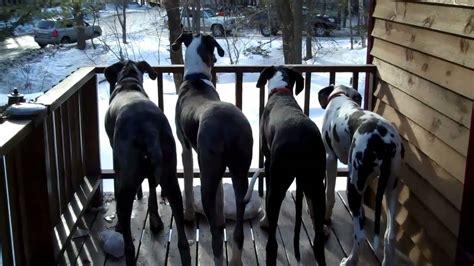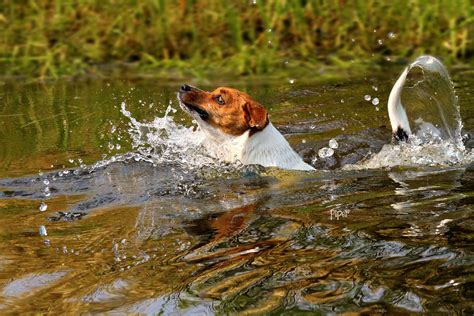
A mother bear and her cub were caught on camera enjoying a refreshing swim in a Monrovia, California resident’s backyard pool, providing a surprising and delightful respite from the summer heat.
Homeowner Carolyn Shoemaker was alerted to the unexpected visitors by her dog’s barking. Upon checking her security camera, she discovered the bear and her cub frolicking in her pool. “I looked at the security camera and sure enough, there was a bear in my backyard,” Shoemaker told KTLA. “And then I saw the baby bear. Oh my gosh.”
The incident, which occurred on a recent hot day, underscores the increasing interactions between wildlife and humans as urban areas expand into natural habitats. The video of the bears’ aquatic adventure quickly went viral, capturing the hearts of viewers worldwide.
An Uninvited Pool Party
Shoemaker, who has lived in her Monrovia home for 23 years, is accustomed to seeing wildlife in her neighborhood, which borders the Angeles National Forest. “We get bears, we get coyotes, we get deer, we get bobcats,” she explained. However, this was the first time she had witnessed a bear actually using her pool.
The security camera footage shows the mother bear carefully entering the pool, followed by her cub. They spent a considerable amount of time splashing around, playing, and seemingly enjoying the cool water. At one point, the mother bear even appeared to be teaching her cub how to swim.
“She was giving the baby bear swimming lessons,” Shoemaker recounted to Fox 11. “It was so cute.”
After their swim, the bears exited the pool and wandered around the backyard before eventually disappearing back into the nearby hills. Shoemaker reported the incident to the Monrovia Police Department, who advised her to remove any potential attractants, such as food or garbage, from her yard.
Growing Human-Wildlife Interactions
The Monrovia incident is far from isolated. As human populations grow and urban sprawl encroaches on natural habitats, encounters between people and wildlife are becoming increasingly common. Bears, in particular, are increasingly venturing into residential areas in search of food and water, especially during dry seasons.
According to the California Department of Fish and Wildlife (CDFW), the state’s bear population has been on the rise in recent years. As a result, the CDFW receives thousands of calls each year regarding bear sightings and conflicts.
“Bears are incredibly adaptable animals,” explained Ken Paglia, a CDFW spokesperson. “They are capable of surviving in a wide range of environments, including those close to human development.”
The CDFW emphasizes the importance of taking precautions to avoid attracting bears to residential areas. These precautions include:
- Storing food and garbage in bear-resistant containers.
- Removing bird feeders and other potential food sources.
- Cleaning barbecue grills after each use.
- Never approaching or feeding bears.
Safety Guidelines and Expert Advice
When encountering a bear, experts recommend remaining calm and avoiding direct eye contact. Back away slowly and make noise to let the bear know you are there. If a bear approaches you, stand your ground and make yourself look as large as possible. If attacked, fight back aggressively.
“The best way to avoid a conflict with a bear is to prevent them from becoming habituated to humans and human food,” Paglia said. “By taking simple precautions, we can help keep both people and bears safe.”
The Monrovia Police Department echoed these recommendations, urging residents to be vigilant and report any bear sightings to authorities.
“We want to remind everyone that bears are wild animals and should be treated with caution and respect,” said Monrovia Police Chief Alan Barcelona. “It’s important to be aware of your surroundings and take steps to minimize the risk of encounters.”
Social Media Buzz and Public Reaction
The video of the mother bear and cub swimming in Shoemaker’s pool quickly went viral, generating widespread attention and amusement. Social media users shared the video extensively, praising the bears’ resourcefulness and expressing delight at their playful antics.
“This is the cutest thing I’ve seen all day!” one user commented on Twitter. “They’re just trying to beat the heat like the rest of us.”
“It’s amazing to see wildlife adapting to urban environments,” another user wrote on Facebook. “We need to learn to coexist peacefully with these animals.”
The incident also sparked discussions about the importance of wildlife conservation and responsible land management. Some commenters argued that the increasing frequency of human-wildlife encounters is a sign that we are encroaching too far into natural habitats.
“We need to be more mindful of the impact our actions have on wildlife,” one user wrote on Instagram. “We need to protect their habitats and ensure they have access to the resources they need to survive.”
Community Response and Future Precautions
The city of Monrovia has a history of bear encounters, and local officials have been working to educate residents about bear safety and prevention measures. The city’s website provides information on how to avoid attracting bears, what to do if you encounter one, and how to report bear sightings.
“We take bear safety very seriously,” said Monrovia City Manager Dylan Feik. “We are committed to working with residents to minimize the risk of conflicts and ensure the safety of our community.”
Following the pool incident, Shoemaker has taken extra precautions to secure her property and prevent future bear visits. She has removed any potential food sources from her yard and installed motion-activated lights to deter wildlife.
“I’m not mad at the bears,” Shoemaker said. “They were just trying to cool off. But I don’t want them coming back into my pool again.”
She has also consulted with wildlife experts to learn more about bear behavior and how to coexist peacefully with these animals.
The Broader Context: Climate Change and Wildlife Behavior
The incident in Monrovia also highlights the broader issue of climate change and its impact on wildlife behavior. As temperatures rise and droughts become more frequent, animals are increasingly forced to seek out new sources of water and food, often venturing into urban areas in the process.
“Climate change is definitely playing a role in the increasing frequency of human-wildlife encounters,” said Dr. Chris Wilmers, a professor of environmental studies at the University of California, Santa Cruz. “As natural habitats become degraded, animals are forced to adapt and find new ways to survive.”
Wilmers added that it is important to address the underlying causes of climate change in order to protect wildlife and prevent further conflicts.
“We need to reduce our carbon emissions and invest in conservation efforts to protect natural habitats,” he said. “Otherwise, we can expect to see more and more of these types of incidents in the future.”
The Role of Education and Awareness
Experts emphasize that education and awareness are crucial for promoting coexistence between humans and wildlife. By learning about the behavior of local animals and taking steps to minimize the risk of encounters, people can help ensure the safety of both themselves and the animals.
The CDFW offers a variety of educational resources on bear safety, including brochures, videos, and workshops. The agency also works with local communities to develop bear management plans and implement preventative measures.
“Education is key to preventing conflicts between humans and bears,” said Paglia. “By understanding bear behavior and taking simple precautions, we can help create a safer environment for everyone.”
The Monrovia incident serves as a reminder that we share our environment with wildlife and that it is our responsibility to coexist peacefully. By taking proactive measures and respecting the needs of animals, we can help ensure that these encounters remain positive and that wildlife continues to thrive.
Further Analysis: Bear Behavior and Urban Adaptation
The behavior of the mother bear in Shoemaker’s pool provides valuable insight into how wildlife adapts to urban environments. Her decision to bring her cub into the pool suggests a level of comfort and familiarity with human surroundings. This highlights the increasing habituation of bears to human presence, driven by factors such as easy access to food sources and diminishing natural habitats.
Bears are naturally cautious animals, and their willingness to enter a residential area and use a swimming pool indicates a significant shift in their behavior. This adaptation can be both beneficial and detrimental. On one hand, it allows bears to survive in altered landscapes. On the other hand, it increases the risk of conflict with humans and exposes them to dangers such as traffic, toxins, and potential harm from residents.
The mother bear’s apparent teaching of swimming to her cub is also noteworthy. It demonstrates the adaptability and resourcefulness of these animals in finding novel ways to survive and thrive in human-dominated environments. Such behavior underscores the importance of understanding bear ecology and behavior in order to develop effective management strategies.
The Legal Framework and Management Strategies
California law protects bears and regulates human interaction with them. It is illegal to feed bears or intentionally attract them to residential areas. The CDFW has the authority to issue permits for the removal or relocation of bears that pose a threat to public safety.
However, relocation is not always a viable solution, as bears often return to their original territories or create new conflicts in their new locations. The most effective management strategies focus on preventing conflicts in the first place, through education, outreach, and enforcement of regulations.
The CDFW collaborates with local communities and other agencies to develop and implement bear management plans. These plans typically include measures such as:
- Public education campaigns to raise awareness about bear safety.
- Technical assistance to residents on how to secure their property and prevent bear attractants.
- Enforcement of regulations prohibiting the feeding of bears.
- Monitoring of bear populations and movements.
- Response protocols for handling bear-human conflicts.
Long-Term Implications and Future Considerations
The increasing frequency of human-wildlife interactions has significant long-term implications for both human communities and animal populations. As urban areas continue to expand, these encounters are likely to become even more common, requiring innovative and proactive solutions.
Future management strategies will need to address the root causes of these conflicts, such as habitat loss, climate change, and human behavior. This will require a multi-faceted approach that involves:
- Land-use planning that minimizes the impact on wildlife habitats.
- Climate change mitigation and adaptation measures to protect natural resources.
- Community-based conservation initiatives that engage residents in protecting wildlife.
- Continued research to better understand wildlife behavior and develop effective management techniques.
Ultimately, the goal is to create a future where humans and wildlife can coexist peacefully and sustainably. This will require a commitment to responsible stewardship of the environment and a willingness to adapt our behavior to minimize our impact on the natural world.
FAQ: Bear Encounters and Safety
1. What should I do if I encounter a bear in my backyard or neighborhood?
- Remain Calm: Do not panic or make sudden movements.
- Give it Space: Maintain a safe distance and do not approach the bear.
- Make Noise: Talk in a normal voice to let the bear know you are there.
- Back Away Slowly: Slowly retreat, keeping the bear in sight. Do not run.
- Remove Attractants: Eliminate any potential food sources, such as garbage, pet food, or bird feeders.
- Report the Sighting: Contact your local police department or the California Department of Fish and Wildlife (CDFW) to report the sighting.
2. How can I prevent bears from coming onto my property?
- Secure Garbage: Store garbage in bear-resistant containers or keep it inside until the morning of collection.
- Remove Food Sources: Do not leave pet food outside, and clean up any spilled food.
- Clean Barbecues: Clean barbecue grills thoroughly after each use to remove food residue.
- Remove Bird Feeders: Bird feeders can attract bears, especially during the spring and summer months.
- Harvest Fruit Trees: Pick up fallen fruit promptly, as it can attract bears.
- Install Motion-Activated Lights: These can deter bears from entering your property.
- Electric Fencing: Consider installing electric fencing around gardens or orchards.
3. What should I do if a bear approaches me or my family?
- Stand Your Ground: Do not run or play dead.
- Make Yourself Look Big: Raise your arms and wave them slowly.
- Make Noise: Shout loudly and clap your hands.
- Use a Deterrent: If you have bear spray, use it according to the instructions.
- Fight Back: If attacked, fight back aggressively, focusing on the bear’s face and eyes.
4. Is it safe to hike or camp in areas where bears are present?
- Be Aware: Be aware of your surroundings and look for signs of bear activity, such as tracks or scat.
- Make Noise: Make noise while hiking to avoid surprising a bear.
- Store Food Properly: Store food in bear-resistant containers or hang it from a tree, at least 10 feet off the ground and 4 feet from the trunk.
- Camp Safely: Set up your campsite away from dense vegetation and food sources.
- Carry Bear Spray: Carry bear spray and know how to use it.
5. What is the California Department of Fish and Wildlife (CDFW) doing to manage bear populations and prevent conflicts?
- Population Monitoring: The CDFW monitors bear populations to track their distribution and abundance.
- Habitat Management: The CDFW works to protect and restore bear habitat.
- Public Education: The CDFW provides educational resources to help people understand bear behavior and prevent conflicts.
- Conflict Resolution: The CDFW responds to bear-human conflicts and works to resolve them safely.
- Regulations and Enforcement: The CDFW enforces regulations to protect bears and prevent illegal activities.
The incident involving the mother bear and her cub in Monrovia serves as a poignant reminder of the interconnectedness between humans and wildlife. As urban sprawl continues and climate change alters natural habitats, such encounters are likely to become more frequent. Addressing these challenges requires a comprehensive and collaborative approach, involving responsible land management, climate action, and community engagement. By prioritizing coexistence and taking proactive measures to minimize conflict, we can ensure a future where both humans and wildlife can thrive.









